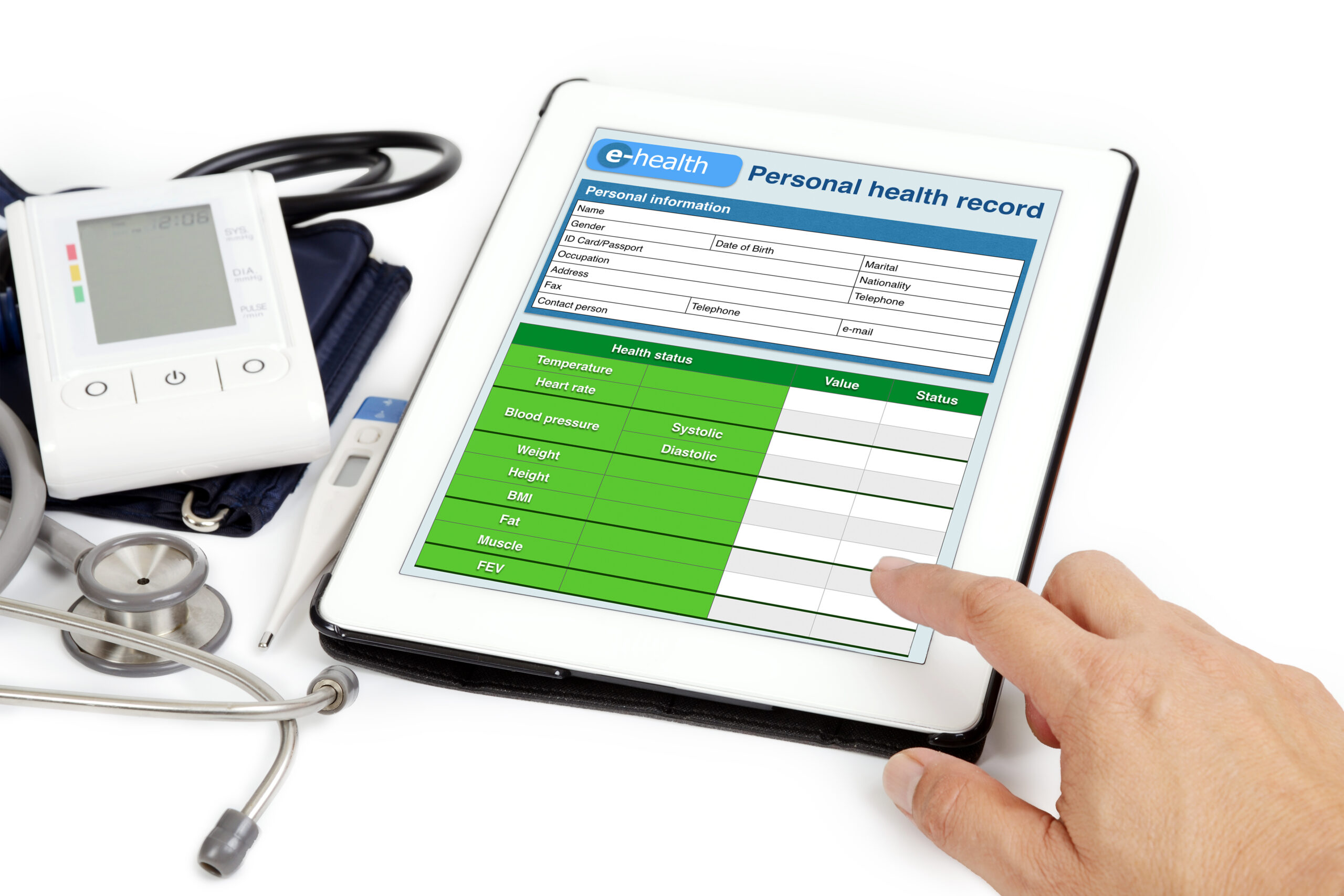Now live! RTHM Direct – simplified medication access for Long COVID, ME/CFS and related conditions. Check it out
The Centers for Disease Control and Prevention estimate as many as 60% of Americans live with at least one chronic condition. Most chronic conditions, like heart disease or diabetes, have clear diagnostic tests to help providers make a diagnosis. Unfortunately, many chronic complex conditions are not that easy to diagnose. These conditions may not have clear or accessible diagnostic tests, and instead, diagnosis relies on symptom and activity data from the patient.
When a standard new patient-provider appointment is 30 minutes to an hour, how do you convey the symptoms you are having and what life is really like? When there aren’t accessible blood tests to monitor treatment success, how do you know what treatments are working? Implementing symptom and activity tracking into your daily routine can help give you and your provider a comprehensive picture of your current health challenges, assist your clinician in making a diagnosis, and help you both understand what treatments are working and whether or not your condition is progressing.
Let’s look closely at symptom and activity tracking, what items you should include, different tracking methods available, and how the information can benefit your overall healthcare.
Symptom and Activity Tracking Helps Empower Patients and their Clinicians
Symptom tracking is important because it allows your healthcare providers to see the symptoms you live with every day, as well as monitor and understand changes in symptoms over time. It can help in several ways:
- Diagnosis and Treatment: Tracking symptoms can aid in the diagnosis of a condition by providing valuable information to healthcare providers. It can also help determine the effectiveness of treatments and guide adjustments to the treatment plan.
- Identifying Triggers: Symptom tracking can help identify triggers or factors that worsen symptoms. By keeping a record of symptoms and potential triggers, you can make lifestyle changes or avoid certain triggers to manage your symptoms better.
- Communication with Healthcare Providers: Symptom tracking provides a comprehensive record of symptoms, which can facilitate more effective communication with healthcare providers. It ensures that important details are not forgotten during appointments and helps healthcare providers make informed decisions about treatment.
- Monitoring Disease Progression: Tracking symptoms over time can provide insights into the progression of a condition. It helps you and your healthcare providers understand how symptoms change, whether they are improving or worsening, and adjust treatment plans accordingly.
- Research and Clinical Trials: Symptom tracking data can contribute to research and clinical trials, providing valuable information about the natural history of a condition, treatment outcomes, and potential new interventions.
- Allows You to Become an Active Member of Your Healthcare Team: As someone with a chronic complex illness, it is easy to feel powerless when it comes to your health and your treatment protocol. Tracking your symptoms allows you to see firsthand what you are experiencing, allows you to identify trends, and see what treatments provide relief, helping you regain some of your power.
Overall, symptom tracking is a valuable tool for individuals and healthcare providers to better understand and manage symptoms, improve communication, and make informed decisions about diagnosis and treatment.
What Do You Track?
When tracking symptoms and activities with chronic illness, it’s crucial to consider several factors to ensure you’re capturing the most accurate and useful information. Here are some key points to keep in mind:
- Symptom Description: Be as detailed as possible when describing your symptoms. Include the type of pain or discomfort, its intensity, its location, if it radiates anywhere, any other sensations associated with it, and any factors that make it worse or better.
- Symptom Frequency and Duration: Note how often the symptom occurs and how long it lasts when it happens. This can help identify patterns or triggers.
- Activity Level: Keep track of your daily activities, including exercise, work, and leisure activities. This can help you understand if your symptoms are related to certain activities. If you have a wearable device, include your steps for the day.
- Diet: Record what you eat and drink each day. Certain foods or beverages may exacerbate your symptoms. Apps like Bitesnap and CalorieMama let you take a photo of your food and AI suggests the name, you just pick the serving size if relevant.
- Medication and Treatment: Keep a record of any medications or treatments you’re using, including the dosage and frequency. This can help determine their effectiveness.
- Sleep Patterns: Chronic illnesses often affect sleep. Note your sleep duration and quality. A wearable device, such as a Fitbit can provide valuable sleep information.
- Emotional Well-being: Your emotional state can impact your physical symptoms. Record your mood and any significant emotional events.
- Environmental Factors: Weather, allergens, or other environmental factors may influence your symptoms. Note any correlations.
- Physiological Measures: If applicable, track measures like blood pressure, heart rate, or blood sugar levels.
Considering these factors, you can create a comprehensive picture of your health over time, which can be invaluable in managing your chronic complex illness.
How to Track Your Activities and Symptoms?
Tracking your symptoms and activities effectively requires a systematic and consistent approach. Start by choosing the method that suits you best. Options can include:
- Physical notebook or journal
- A printed symptom tracker sheet – free templates are available online
- Digital document: Google Doc, Word Doc, etc. (you can speak into Google Docs and Word instead of typing)
- Specialized health tracking app, like Bearable, makevisible, RTHM Discover
- Smartphone calendar or notes application: Notepad, Evernote, etc.
- Voice memos on your smartphone (ideally one that auto transcribes your recordings into text, like Otter)
- A large calendar with plenty of space for each day
Next, you want to decide how you are going to track your symptoms and what information you are going to include. It may be a good idea to establish a personal severity chart to quickly list your symptom severity when tracking. This video shows some good ideas on how to track different information and how you can evaluate the information. (If you are using an app, the information you can record may be limited, so it is important to find a program that includes data that you and your provider feel is most important.)
You want to set a time each day when you will record your daily data. Depending on your symptoms, this can vary daily, but it is a good idea to try and maintain a routine. This helps ensure daily information is recorded, giving you more comprehensive data.
How Symptom and Activity Tracking Can Help You Better Manage Your Chronic Illness
Symptom and activity tracking is a powerful tool that can provide valuable insights into your health, particularly if you’re living with a chronic illness. Here’s what you can learn from diligent tracking:
- Understanding Symptom Patterns: By recording when symptoms occur and their severity, you can start to see patterns. You might notice that symptoms are worse at certain times of the day, after specific activities, or in certain weather conditions. This can help you anticipate and manage flare-ups more effectively.
- Identifying Triggers: Detailed tracking can help identify triggers that exacerbate your symptoms. These could be specific foods, activities, stress, lack of sleep, or even environmental factors. Once you know your triggers, you can take steps to avoid them and potentially reduce the frequency or severity of your symptoms.
- Evaluating Treatment Effectiveness: If you’re on medication or undergoing other treatments, tracking your symptoms can help determine their effectiveness. You can observe if your symptoms improve, worsen, or remain unchanged after starting a new treatment, providing valuable feedback for your healthcare provider.
- Promoting Self-Care: Tracking can also highlight the importance of self-care activities. You might notice that symptoms improve with regular exercise, adequate sleep, or a balanced diet. This can motivate you to maintain these healthy habits.
- Emotional Well-being: Tracking can also help you understand the link between your emotional state and your physical symptoms. You might find that stress, anxiety, or low mood exacerbates your symptoms, highlighting the need for emotional self-care and possibly mental health support.
Symptom and activity tracking can provide a wealth of information that empowers you to take an active role in managing your chronic illness. It promotes a better understanding of your health and fosters effective communication with your healthcare providers, ultimately leading to improved quality of life.
How Do You Share the Information with Your Provider?
Tracking data can be a powerful tool for your overall care and finding a provider who is willing to partner with you is essential. Talk with your provider to see how they would like to receive your tracking information. For example, your provider may ask you to download a copy of your most recent tracking through your patient portal a few days before your appointment so they can look it over before seeing you. If your provider is not willing to include your tracking information in your care plan, it may be time to find another healthcare provider.
Activity and Symptom Tracking Is a Great Addition to Your Health Summary
Your symptom and tracking information is a great addition to your health summary. Your health summary, also known as a personal health record (PHR), is a collection of your medical history that you maintain on a regular basis in order to have your full medical history and current information available when you see a new provider or experience a medical emergency. To learn more about creating a health summary, visit our blog “Creating a Health Snapshot Sheet.”
RTHM providers and support team members understand the importance of symptom and activity tracking. If you have any questions or concerns when it comes to your symptom tracking, join the RTHM community where you can interact with others living with complex illnesses as well as RTHM team members who can answer your questions. Join the RTHM community HERE.

Get updates
Join our mailing list



